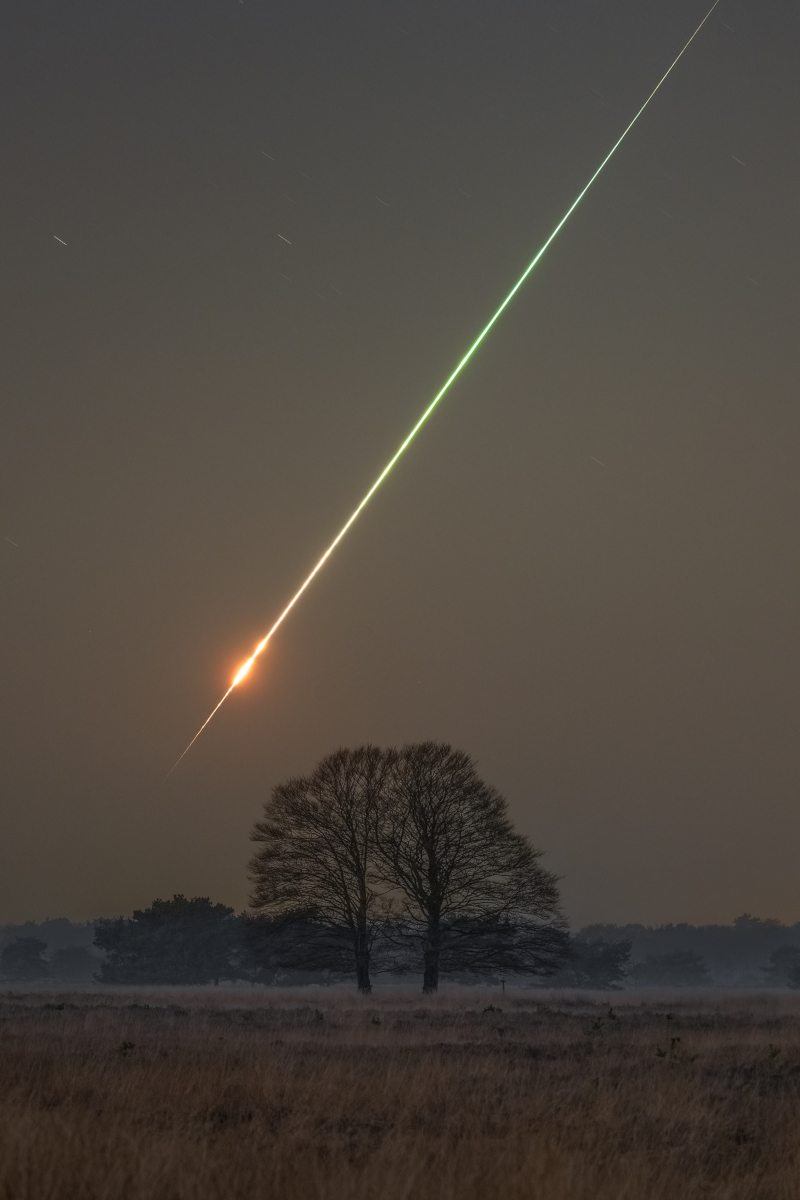2023年2月17日
2023 CX1 Meteor Flash
Image Credit & Copyright: Gijs de Reijke
Explanation: While scanning the skies for near earth objects Hungarian astronomer Krisztián Sárneczky first imaged the meter-sized space rock now cataloged as 2023 CX1 on 12 February 2023 at 20:18:07 UTC. That was about 7 hours before it impacted planet Earth’s atmosphere. Its predicted trajectory created a rare opportunity for meteor observers and a last minute plan resulted in this spectacular image of the fireball, captured from the Netherlands as 2023 CX1 vaporized and broke up over northern France. Remarkably it was Sárneczky’s second discovery of an impacting asteroid, while 2023 CX1 is only the seventh asteroid to be detected before being successfully predicted to impact Earth. It has recently become the third such object from which meteorites have been recovered. This fireball was witnessed almost 10 years to the day following the infamous Chelyabinsk Meteor flash.
Tomorrow’s picture: light-weekend
流星2023 CX1的亮闪
图像提供与版权: Gijs de Reijke
说明: 匈牙利天文学家Krisztián Sárneczky(萨涅茨基)在扫视天空寻找近地天体时,于世界时2023年2月12日20:18:07,首次拍到了这块如今编录号为2023 CX1、大小在公尺左右的太空岩石。拍照的时间点,则在它冲撞地球大气之前约7个小时。随后发布的轨迹预测,更为流星观测者创造了难得的机会,让临时性就位的规划,得以造就这幅摄于荷兰的精采火流星图像,记录了2023 CX1在法国北部天空汽化崩解的景象。更特殊的是:这是萨涅茨基第二次发现即将撞击地球的小行星,而2023 CX1也是先有预测然后真实撞击的第七颗小行星。此外,它也是第三颗有找到陨石的此类天体。人们目睹了这颗火流星的那天,恰好和著名的车里雅宾斯克流星亮闪相隔了将近10年。
明日的图片: light-weekend



